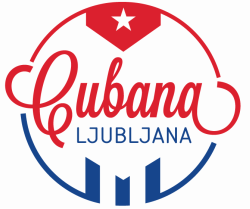|
A short timba primer for the dancer Author: Jan Bervar Estimated read time: 10 minutes At the beginning of one's Casino ("cuban salsa") dance journey people often ask about the difference of modern cuban dance music to other forms of "salsa". Experienced dancers quickly reply that you "just feel" that the music playing is Cuban (as opposed to, Puertorican, Colombian, etc.), which is not the most helpful of answers. This article tries to explain, in simplified terms, where that intuitive feeling comes from, from a dancer's perspective. What is "salsa" anyway? My favorite definition of salsa is that of a musical genre, born in the United States (New York) during the 1970s, from the roots of Cuban son music. Technically, we can describe a salsa song as:
If music matching this description was and is still produced in Cuba, we can call it Cuban salsa. If it is produced outside of Cuba, it is typically classified as salsa dura - the style faithful to the 1970-era Fania Records period, or salsa romantica, a more recent style mixed with pop structure and hooks. Listen to two examples of modern salsa songs: one example of cuban salsa (by by Dan Den), and one Puerto Rican salsa dura (by El Gran Combo) here:
Timba: diversity, virtuosity, aggression The musical genre of timba emerged from the salsa and songo genres in the late 1980s, when Cuban musicians reacted to the downfall of the Soviet Union - and the resulting period of economic hardship in Cuba - with a musical revolution. They took the foundation of son, salsa, and songo genres, made them more dynamic, showing off their instrumental virtuosity, and integrating the rich legacy of Cuban musical history - most notably Cuban rumba - into it. We can describe a timba song as follows (from the most, to the least obvious):
Enough of theory, let's see how timba sounds like :) Ese Soy Yo by Rene Alvarez y su Cuban Combination First, let's illustrate the "gears" that make timba more dynamic than salsa. Ese Soy Yo starts off like a salsa song, with a romantic and low-key intro, which uses a bridge (1:22-1:32) to transition to its montuno, Then, at 2:33-2:43 everything changes with the first PRESION ("orgasmic" moment of the song), considerably lifting the energy level in the song, followed by another presion at 3:14-3:24, even more energetic than the first one. With a good timba song, you should be screaming "manos pa'rriba!" ("hands in the air!") during presion gears, and going absolutely dance-crazy (despelote, tembleque) to honour those special timba moments :) Mi Musica by Alexander Abreu and Havana D'Primera Mi Musica, a timba anthem, has as many as 5 presion parts: 1:59-2:10, 2:58-3:11, 3:40-4:02, 4:30-4:52, and 5:10-5:33 Instrumental patterns A very nice, if mechanic, example of the difference between the instrumental patterns in salsa and timba is at 8:35 in this video, which shows how the same song would be approached by a salsa and a timba band. Here, you can spot the standard patterns of (US, son-based) salsa vs the funky patterns of timba. Not everything Cuban after 1989 is Timba! Cubans still produce salsa songs, as witnessed by the first musical example in this article, therefore all Casino is not danced exclusively to timba music. Another popular modern development is the crossover between timba and reggaeton, which is best represented by the music of Los 4: songs in rumba clave, with metales (trumpets and trombones), but essentially a reggaeton beat and reggaeton lyrics on top. Now, to internalize these "rules" and make them part of your intuition, listen to tons of music and enjoy your timba dance journey <3
6 Comments
Thomas
3/6/2020 11:43:08
Very helpful to understand the difference! Thanks!
Reply
Jeremy
1/11/2020 07:21:40
this was so informative thank yoU!
Reply
Robert
27/9/2021 22:48:06
Thank you a lot for all this information!
Reply
4/1/2024 01:53:24
How does the author define "salsa" as a musical genre, and what are the key components that characterize a salsa song? According to the article, what is the difference between Cuban salsa and salsa produced outside of Cuba, and what are the two main styles mentioned?
Reply
1/5/2024 10:09:25
What are some of the musical elements that help you identify the genre?
Reply
Leave a Reply. |
Tremenda MuelaTremenda Muela (big mouth) is a blog for dancers, who want to know too much about Cuban music, dance, and culture. Archives
May 2018
Categories |
© 2024 // Cubana Ljubljana // Z uporabo spletne strani se strinjate, da za potrebe navigacije in analitike uporabljamo piškotke

 RSS Feed
RSS Feed